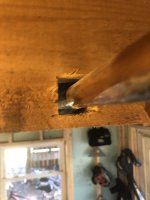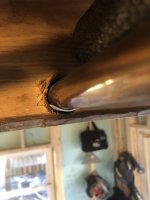samboski
New Member
I get the classic popping/ticking noises as my copper hydronic heat pipes heat/cool and have some areas that the pipes are going through very tight holes in the floor joists. I have full access to everything right now as we're remodeling the basement and that ceiling is torn down. I've tried adding some plastic shims but the space is so tight that it actually made the noises worse. It seems to me the only solution is to enlarge these holes but I'm open to other suggestions. I also have no idea how I'd get the holes any bigger without having to cut and remove the pipe which I am capable of doing but would really be a pain. Thanks for any help!


